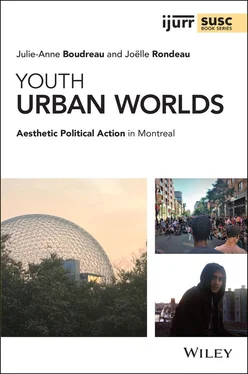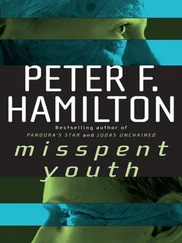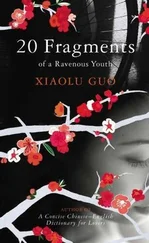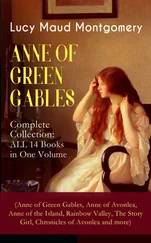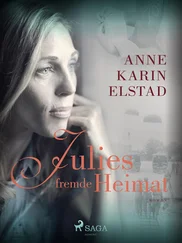1 ...6 7 8 10 11 12 ...16 In English, we must read ‘distribution’ with the double meaning that the French word partage implies; that is, as distribution and/or partaking. For Rancière, the political consists of aesthetic practice insofar as ‘it sets up scenes of dissensus’ whereby the excluded, unseen, or those who don’t have a recognized (legitimized) political voice make a sensible appearance which disrupts the democratic sensorium by exposing the polemical distribution of its constituents and the modalities of their perception and partaking in what is to be held in common (Rancière 2000; Vihalem 2018, p. 6). In Rancière’s words (2000, p. 24; our translation), the relationship between aesthetics and politics is situated at the level of this ‘sensory cutting of parts of the common of a community, the forms of its visibility and its arrangement’. 6 As the philosophy scholar Margus Vihalem (2018, p. 7) remarks, ‘Rancièrian aesthetics, especially due to its political implications, partly moves away from Kantian aesthetics, although it preserves and further develops the fundamental intuition of Kantian aesthetics, namely that the aesthetic is what pertains to “a priori forms of sensibility”’. This approach fruitfully suggests that the distribution of the sensible operates out of and through a certain regime of perceptibility which assigns meanings, value, place, parts, temporalities to sensations in a social democratic order. Yet, by focusing on moments of political dissensus or interventions that disrupt the polemical order of the distribution of the sensible, Rancière does not consider the empirical difficulty in identifying what Jazeel and Mookherjee (2015, p. 355) want to call ‘genuinely political interventions from what we might otherwise regard as anodyne postpolitical re‐orchestrations of the social order’ (see also Papastergiadis 2014).
We turn to Panagia (2009) to broaden our understanding of aesthetic political action that does not necessarily involve instant disruptions in the distribution of the sensible, but that nonetheless creates sensory lifeworlds affecting what is available to be sensed (in terms of both sensations and meanings) in urban youth worlds. Panagia’s reflection on the politics of sensation is useful here because it enables us to pause in the ‘experience of sensation that arises from the impact of an appearance’ (Panagia 2009, p. 187), which, in his words, disfigures or disarticulates the conditions of perceptibility that would make recognition possible. ‘Rather than recognition’, writes Panagia, ‘I suggest that the emergence of a political appearance requires an act of admission: an appearance advenes upon us, and we admit to it. An act of recognition might follow from the durational intensity of advenience but it does not follow causally in that there is no necessary condition that makes it so that it must (or even can) recognize any or all appearance’ (Panagia 2009, p. 151; our emphasis).
In order to understand this conception of aesthetic politics, we need to look at both how action unfolds and its effects. We find it useful to distinguish between political action and political gestures . Political gestures involve the body in aesthetic ways (marching in a demonstration, screaming to a police officer, going to a punk concert) but may not necessarily register attention in their unfolding, or be performed with an intent to register attention. As Black studies and Black feminist theorists show, some forms of aesthetic gestures do not necessarily unfold as interventions into the sensorium of a dominant order, seeking to disrupt structures that determine regimes of perceptibility. For instance, Black feminist scholar Patricia Hill Collins (1998, p. 48) calls attentions to speech acts of Black women ‘breaking silence’ by ‘giving testimonials that often disrupt public truths about them’ from the authority of their own lived experiences. But, as she remarks, ‘[a] second type of knowledge exists, the collective secret knowledge generated by groups on either side of power that are shared in private when the other side’s surveillance seems absent’ (Collins 1998, p. 48). Political gestures in this context, conversations shared around the kitchen table or in student union offices for example, are not performed to register attention. ‘For oppressed groups, such knowledge typically remains “hidden” because revealing it weakens its purpose of assisting those groups in dealing with oppression’, writes Collins (1998, p. 49).
Political acts are creative moments that break from the routine and, through their unfolding, intrinsically legitimate the actor. An ‘act’ is not a reaction to a situation, but the creation of an actor who can legitimately be present in a situation they participate in creating. In turn, a situation is a moment and space where actors share a common sense of what is happening; they can sufficiently read what is happening to be able to engage in the interactions unfolding. Millions of banal situations unfold in our urban lives. A situation can become a political act when we make political gestures and give special meaning to what is happening. Take the following situation at the Saint‐Michel subway station. A police officer approaches a group of youngsters hanging out near the entrance gate. He asks them to move and disperse. The group poses a political gesture by asserting the presence of their bodies there. They negotiate with the police officer. This creates a situation they can identify, unlike routine or banal instances of urban interactions, and thus they constitute themselves as actors. This is a political act. The police officer smiles, stays a little while with them, and then continues his route. The group stays a little more time and then leaves. Had they not asserted their embodied presence to the police officer, this would not have been a situation that broke from routine. It would not have been a political act. The accumulation of such political acts in our everyday lives and their transformation into a politicized narrative is what we call political action. 7
In other words, what matters in the exercise of power is our experience of its effects. In order to capture these effects, Allen (2003) distinguishes between different modalities of power, each with their own relational peculiarities. Domination is an instrumental form of power relation exercised at someone else’s expense; it restricts choice and closes down possibilities. Authority is also an instrumental power relation, but it does not involve the imposition of a form of conduct leading to submission. Coercion directly involves the threat of force to exact compliance, whereas manipulation implies the concealment of intent. Seduction , for Allen, is a modality of power relation that arouses specific desires by taking advantage of existing attitudes and expectations. Thus, it is the modality most relevant to aesthetic political relations. Because its effects are unpredictable, it is the opposite of domination. Seduction can be refused. It works through suggestion and enticement rather than prescription. If someone is not attracted to seducing acts, they will have no effects.
In his insightful empirical study of why criminals act when they do, Katz (1988) argues that a crime can occur only when a criminal senses a distinctive sensual dynamic at play in a specific moment and place. He explores how the criminal is attracted to the sensual possibilities opened by the situation and seduced by its ‘symbolic creativity’. He is attentive to the ‘mode of executing action, [the] symbolic creativity in defining the situation, and [the] esthetic finesse in recognizing and elaborating on the sensual possibilities’ (Katz 1988, p. 9). He argues that ‘to one degree or another, we are always being seduced and repelled by the world’, that we ‘are always moving away from and toward different objects of consciousness, taking account of this and ignoring that, and moving in one direction or the other between the extremes of involvement and boredom’. He pursues: ‘In this constant movement of consciousness, we do not perceive that we are controlling the movement’ (Katz 1988, p. 4). In other words, for Katz, seduction and attraction are almost synonymous. He does not ascribe to seduction an intentional strategy. Instead, he focuses on the effects of seduction and the ‘esthetic finesse’ required to respond to it. As an emitting modality of power, seduction needs a receptive effect. This is what we will call attraction .
Читать дальше
